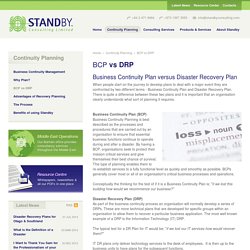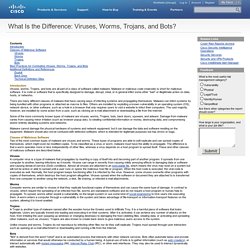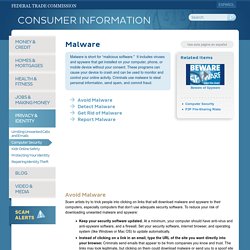

CYBERCIEGE. Assignments. What Is Onion Routing, Exactly? [MakeUseOf Explains] Internet privacy.
![What Is Onion Routing, Exactly? [MakeUseOf Explains]](http://cdn.pearltrees.com/s/pic/th/routing-makeuseof-explains-55374847)
Anonymity was one of the greatest features of the Internet in its youth (or one of its worst features, depending on who you ask). Leaving aside the sorts of problems that spring forth from anonymous interaction, such as the lack of consequences, Internet privacy and anonymity is important for preventing some serious crimes, like identity theft. And so when topics related to Internet privacy pop up, you’ll often hear of “private browsing” and “proxy servers” and such. But honestly, the Internet is never truly anonymous. For the most part, your activities can be traced back to you; the only difference is how difficult it is to trace your actions back to you. The Basics Of Onion Routing One way to understand onion routing is to start with the concept of proxy servers. But proxy servers aren’t exactly anonymous. Tools. The Hidden Security Risks of P2P Traffic. BCP vs DRP — Business Continuity & Disaster Recovery Specialists - Standby Consulting Ltd. Home » Continuity Planning » BCP vs DRP When people start on the journey to develop plans to deal with a major event they are confronted by two different terms - Business Continuity Plan and Disaster Recovery Plan.

There is quite a difference between these two plans and it is important that an organisation clearly understands what sort of planning it requires. Business Continuity Plan (BCP) Business Continuity Planning is best described as the processes and procedures that are carried out by an organisation to ensure that essential business functions continue to operate during and after a disaster. By having a BCP, organisations seek to protect their mission critical services and give themselves their best chance of survival. This type of planning enables them to re-establish services to a fully functional level as quickly and smoothly as possible. Disaster Recovery Plan (DRP) As part of the business continuity process an organisation will normally develop a series of DRPs.
Sandboxie - Download. Report Phishing Scams. Why Social Engineering Should Be Your Biggest Security Concern. Ransomware – A Growing Menace. What is a Adware? - AVG Threat Labs. Spyware: What Is It and How to Prevent It. UNPROTECTED WEBCAMS. 40 Webcams you can Zoom and Control. What Is a Logic Bomb? Explanation & Prevention. A logic bomb is malware that is triggered by a response to an event, such as launching an application or when a specific date/time is reached.

Attackers can use logic bombs in a variety of ways. They can embed arbitrary code within a fake application , or Trojan horse, and will be executed whenever you launch the fraudulent software. Attackers can also use a combination of spyware and logic bombs in an attempt to steal your identity. For example, cyber-criminals use spyware to covertly install a keylogger on your computer. The keylogger can capture your keystrokes, such as usernames and passwords. Time Bomb. What Is the Difference: Viruses, Worms, Trojans, and Bots? Introduction Viruses, worms, Trojans, and bots are all part of a class of software called malware.

Malware or malicious code (malcode) is short for malicious software. It is code or software that is specifically designed to damage, disrupt, steal, or in general inflict some other “bad” or illegitimate action on data, hosts, or networks. There are many different classes of malware that have varying ways of infecting systems and propagating themselves. Malware can infect systems by being bundled with other programs or attached as macros to files. Some of the more commonly known types of malware are viruses, worms, Trojans, bots, back doors, spyware, and adware. Malware cannot damage the physical hardware of systems and network equipment, but it can damage the data and software residing on the equipment. What is a Trojan Virus? Mutitenancy_Santana.docx.
Download Microsoft Baseline Security Analyzer 2.3 (for IT Professionals) from Official Microsoft Download Center. Wireshark · Go Deep. Antivirus och anti-spyware. Tor Browser. Download the file above, and save it somewhere, then double click on it. (1) Click "Run" then choose the installer's language and click OK (2).

Make sure you have at least 80MB of free disk space in the location you select. If you want to leave the bundle on the computer, saving it to the Desktop is a good choice. If you want to move it to a different computer or limit the traces you leave behind, save it to a USB disk. Click Install (3) Wait until the installer finishes. This may take a few minutes to complete. Once the installation is complete, click Finish to launch Tor Browser's wizard. Once you see Tor Browser's wizard click Connect Alternatively, you can launch Tor Browser by going to the folder Tor Browser which can be found at the location you saved the bundle at (Default: Desktop) and double click on the Start Tor Browser application.
Once Tor is ready, Tor Browser will automatically be opened. Once you are finished browsing, close any open Tor Browser windows by clicking on the. Malware. Malware is short for “malicious software.

" It includes viruses and spyware that get installed on your computer, phone, or mobile device without your consent. The Web Bug FAQ. How to search like a spy: Google's secret hacks revealed. The National Security Agency just declassified a hefty 643-page research manual called Untangling the Web: A Guide to Internet Research (PDF) that, at least at first, doesn't appear all that interesting.

That is, except for one section on page 73: "Google Hacking. " "Say you're a cyberspy for the NSA and you want sensitive inside information on companies in South Africa," explains Kim Zetter at Wired. "What do you do? " Well, you could type the following advanced search into Google — "filetype:xls site:za confidential" — to uncover a trove of seemingly private spreadsheets.